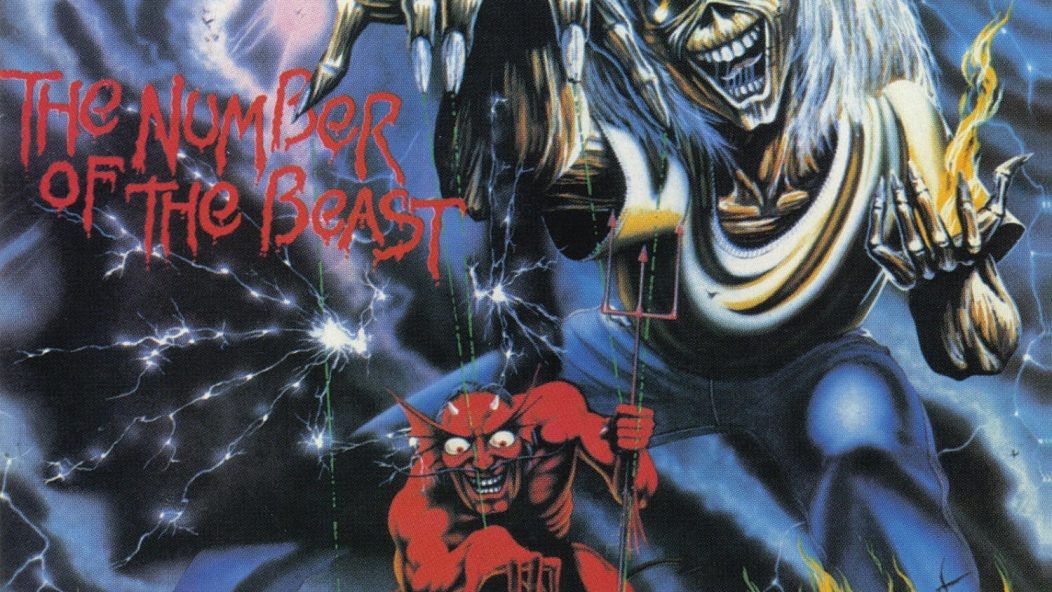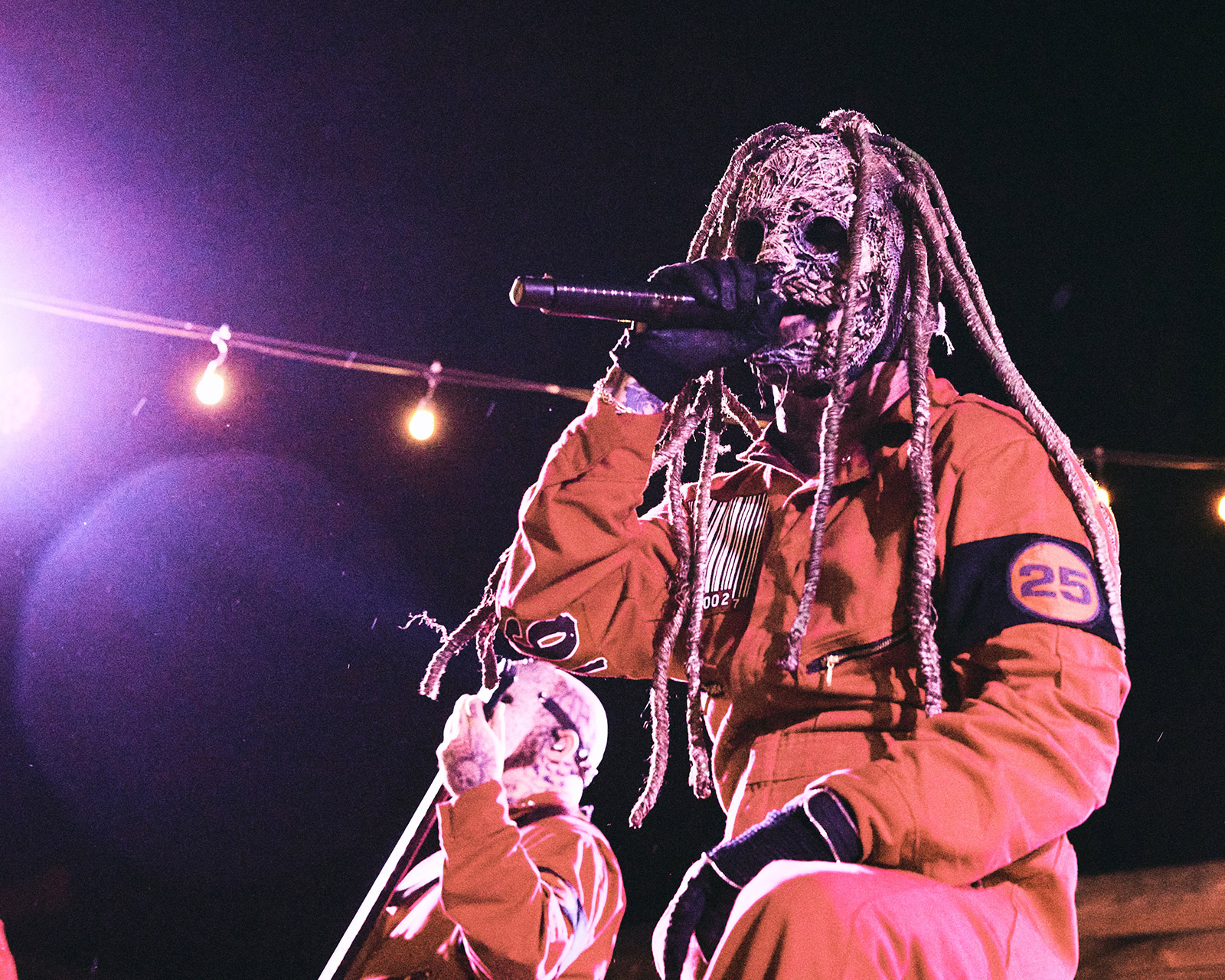
Iron Maiden's 'The Number of the Beast' Turns 35

. . .
Thirty five years ago today, British heavy metal legends Iron Maiden released their third album The Number of Beast. Few albums can compete with its footprint. The quintessential Iron Maiden album, The Number of the Beast represents the culmination of the shock rock aesthetic they’d refined over the previous two albums, this time delivered for the first time with beloved vocalist Bruce Dickinson behind the microphone. The band’s previous self-titled record and its follow-up Killers plowed very similar ground, but Number of the Beast marks the final crystallization of their 70’s prog-meets-punk sound, with prog maybe getting a slight leg up since Dickinson was better to encapsulate the intense vocal styles that accompanied bassist and lyricist Steve Harris’s influences like Jethro Tull and Uriah Heep.
A favorite of fans as well as the band, it’s the album they draw the second-most songs from in live performances. Their self titled barely edges it out only because they always play “Iron Maiden” at the end of their shows. Thirty five years later The Number of the Beast is still the main attraction in the Maiden circus.
The transformation that Iron Maiden underwent while recording and promoting this record is more than song deep: the band became an impressive live force behind this record without the tour-averse Paul Di’Anno, the band’s previous singer, holding them back. The Number of the Beast topped the UK charts for two weeks, and launched the band into numerous other top 10’s worldwide. In the US, the unmistakably British and, to the moral majority, satanic band cracked the top 40. They wound up selling a quarter million copies on these shores in under twenty weeks. By all accounts even though they played support to Scorpions on their massive tour in support of Blackout, Maiden was pulling as many fans as their older inspirations were.
Maiden’s success had little precedent. Fellow Brits Judas Priest were bigger at the time, and Def Leppard would be even bigger after, but both bands dealt with the same sexual party cliches that mainstream pop rock had in the previous decade. Harris dismissed such topics as “wussy”, and in their place wrote songs about niche science fiction films, British cult TV shows, the bible, and even the epic poem ‘Tam O’Shanter’ by Scottish poet Robert Burns. Iron Maiden looked and performed like jocks, but wrote like nerds. Maybe the only heavy rock band that can boast the same popular appeal with niche subject matter is Rush, and unlike that outfit everyone was invited to the Iron Maiden party.
Maybe that balance of popular appeal, intellectual content and shocking imagery is the secret to Maiden’s continued esteem. With The Number of the Beast the band entered a kind of Goldilocks zone, close enough to the mainstream to be flush with cash, but far enough away to be a little geeky and a little dangerous.
. . .

. . .
For my money, The Number of the Beast is a classic, but it’s not perfect. Opening track, “Invaders” doesn’t exactly feel like the bombastic opening to a must-own piece of metal history. It lacks the drama and tension of “Hellion” transitioning into “Electric Eye”, or the moody rain sounds that set the mood for Black Sabbath. Worse, the song doesn’t exactly play to Dickinson’s strengths. Its chorus is a clunker—Dickinson’s piercing shriek here probably inspired one unimpressed critic to call him “the air raid siren”. Forgive its relative awkwardness, because it’s a reworked version of “Invasion” from Maiden’s earlier Soundhouse Tapes EP. Harris and co understand its weakness. They’ve never played it live.
Later, “Gangland” puts an awkward step into the otherwise unstoppable side B. Maiden originally waffled between including “Gangland” and the moodier and more progressive “Total Eclipse”, and have expressed regret in interviews at including the former rather than the latter. Most versions of the record pressed after 1998 include both, but none include only “Total Eclipse”.
From track two forward, though, and The Number of the Beast invokes the band’s myriad strengths. “Children of the Damned” plays with Sabbath-ish atmosphere but Dickinson elevates its titular chorus to something no other singer could accomplish. By the time the band is halfway through “The Prisoner”, Dickinson has his hooks deep in any attentive listener much the same way Eddie has Satan in his thrall in the cover art. “22 Acacia Avenue” takes an old Adrian Smith tune from his time in Urchin, and reforges it into a rollicking prog number played at punk speed.
Side B includes maybe Maiden’s three best songs. The album ends with the strength Master of Puppets starts with.
. . .

. . .
The title track, their second most-performed number, begins with a now iconic Vincent Price imitator reading from two passages from the Book of Revelations before launching into a seemless blend of progressive metal and storytelling. It earns every blast of pyro that’s ever accompanied it.
“Run to the Hills” presages thrash with a high speed sing-along about the genocide of Native Americans. Anthrax’s “Indians” would not exist without it. The repetitive ending chorus makes for a good example of the kind of ecstatic songwriting that the band could not execute with Paul DiAnno. It was the band’s first hit in America, and remains one of their most recognizable songs.
The album’s last song, “Hallowed Be Thy Name”, carries enough dramatic weight that giving it a critical appraisal is difficult if not impossible. Maybe Maiden’s most well-articulated fusion of musicality and storytelling, the song details the last words words of a criminal sentenced to hang by the neck until dead. The band grapples with a whole lot on the song: the struggle between religious faith in an unfeeling universe, as well as balancing a long solo section with an infectious sing-along. It ought to not work, but it does so well that it’s Maiden’s third most-performed song.
. . .

. . .
Much of the success of “Hallowed Be Thy Name” and The Number of the Beast falls on the shoulders of new singer Bruce Dickinson who quickly became the most recognizable member of the band. Gifted with a powerful chest voice, Dickinson manages to land vocal screeches that Rob Halford would have used a falsetto to reach. Maybe more importantly, he performed with a near inexhaustible supply of kinetic energy and charisma. Metal would need to wait for an Axl Rose or a Mike Patton to find a singer with the same blend of dynamism and vocal prowess.
Dickinson’s greatest strength doesn’t lie in his tremendous range or his almost supernatural charisma, even though in those realms he can only count Ronnie James Dio, Freddie Mercury and a few others as his peers. The thing Dickinson can do which nobody else could is twist Steve Harris’s verbose and counter-intuitive lyrics into infectious and memorable shapes. The unwieldy verses of “Hallowed be thy Name” would be mashed potatoes in any other mouth.
Dickinson’s performances tended to improve later in the 80s, but he sounds maybe his most vicious on The Number of the Beast. Following a contentious split with his previous band Samson, not to mention a long legal battle which, according to The Guardian, left him unable to write lyrics for years, Bruce snarls and spits whenever he’s not forced into pure operatic form. Each low bar he sings comes across as a “Fuck You”.
For better or for worse, no other Iron Maiden record energized the band’s career the way The Number of the Beast did. The band tinkered with its sound for the remainder of the 80’s, shedding more and more of the punk fury of the Di’Anno years in favor of conceptual complexity (Powerslave), sonic variation (Somewhere in Time) or both at once (Seventh Son of a Seventh Son). The band still sounds more proggy than plucky to this day, not that it’s hurt them at all. Iron Maiden still play arenas, record albums, and maintain a huge and furious fanbase. They nailed the album format on Powerslave, but when The Number of the Beast reaches full power, it’s the pinnacle commercially and creatively of what traditional heavy metal is capable of.
. . .
. . .










